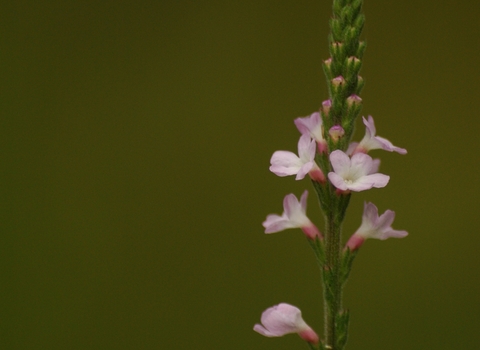
Vervain © AnneTanne under CC BY-NC-SA 2.0 <https://creativecommons.org/licenses/by-nc-sa/2.0/>
Vervain
An introduced plant, vervain is widely naturalised in the UK. It is a great source of nectar for all kinds of insects and can be seen on rough grassland, waste ground, coastal cliffs and roadside verges.
